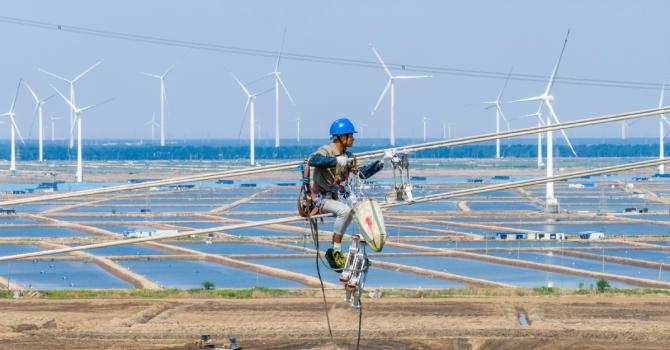Chief executive election: three areas where candidates can transform Hong Kong governance
- Carrie Lam’s proposal for reorganising the government structure provides an opportunity for potential candidates to express new perspectives
- Key challenges include how to tackle climate change, digitalisation and economic progress, to better serve the public
Chief Executive Carrie Lam Cheng Yuet-ngor’s proposal to reorganise the government structure, for the consideration of the next administration, may not be enough if a new leader wants more than improved efficiency.
The chief executive election is in March, and the nomination period starts next month. It may well be a contested election.
Aspiring candidates will have to state their visions and policies for Hong Kong. A persuasive manifesto must resonate with the people and fit the trajectory of national development. Hong Kong’s leader should also have an appealing international message.
A popular incumbent has it relatively easy. But tremendous effort is required for someone whose popularity has waned to show that the incumbent is still the best person to guide society under ever more complex circumstances. A challenger needs to have new ideas and must appear to be the better choice.
In the case of Hong Kong, candidates have to obtain enough nominations from the 1,500-member Election Committee to get to the starting block and then be elected by it. The winner will also need Beijing’s endorsement.
Despite the fact the general public cannot vote directly for their leader, ordinary folk are still interested in what kind of person will be in charge for the coming five years. Hence, there will be great interest even if there won’t be the fanfare associated with a popular election.
Of course, there are many ways for candidates to shape their manifestos. Policy articulation in Hong Kong often takes the form of a list: a long menu of initiatives wrapped in bureaucratic language.
One way to depart from this could be with a “future forward” narrative, demonstrating a good grasp of the transformation needed by Hong Kong.
Lam’s proposal for reorganising the government structure provides an opportunity for potential candidates and the political establishment to express fresh perspectives, given that the issues of “patriotism” and national security have essentially been settled through the electoral reforms.
The proposed restructuring is intended to enhance the effectiveness of governance and meet society’s expectations. Understandably, it takes current policy focuses as the starting point.
This “list approach” could be reorganised to show how the government can use its full capabilities to meet complex challenges, three of which are locally, nationally and globally relevant.
The first is climate change and sustainability. With the world now ranking carbon neutrality and biodiversity as twin pillars for human survival, economic development must follow an ecological path.
Our national government talks about building an “ecological civilisation” and has announced massive changes to industries and the economy, with the goal of achieving carbon neutrality by 2060.
International and national financial regulations are evolving to include climate and sustainability risk assessments for companies that will affect their ability to raise capital.
The second challenge is digitalisation, which needs to be pushed through effective policymaking.
Digital competence needs to be woven into every aspect of the administration, business and society to improve governance, city planning and infrastructure, the environment, industry, competitiveness, productivity, education, social communication and more.
The third challenge is to ensure that economic progress benefits all of society. Internationally, the United Nations Sustainable Development Goals serve as a reminder to governments and even businesses that development is for the benefit of all. Nationally, the new narrative centres around achieving “common prosperity”.
Taken together, there is an opportunity for political leaders in Hong Kong to reframe how they can best serve the public. As part of the restructuring, the three challenges can be used to help guide the distribution of responsibilities.
Hong Kong already has many initiatives related to these three macro trends, including its 2050 carbon neutrality target and a massive housing plan. However, leaders have yet to use them as a coherent set of overall policy drivers.
The three topics also overlap so the chief secretary and financial secretary should demand aggressive approaches coordinated across bureaus and departments to ensure Hong Kong is in a leading position to tackle them head-on.
This will be possible with a clear command at the top and policy integration, involving principal officials and the civil service, pursued vigorously. Rightly, the proposal includes the reinstatement of a separate post of director of environmental protection, separating it from the current combined role with the permanent secretary for the environment, but that will not be enough.
Take the Northern Metropolis for example. The entire development brief should be climate-friendly and sustainable. Policies should help businesses be more competitive by being low-carbon and digitally advanced, which will in turn attract international investment – a task for the Commerce and Economic Development Bureau.
The Northern Metropolis will connect with Shenzhen, and thus there are opportunities for the whole region to plan for clean energy, carbon neutrality, enriching biodiversity, and resilience to severe weather and sea level rises. Many bureaus and departments need to integrate more explicitly than in the restructuring proposal.
Buildings, including housing, must be green and designed to help lower temperatures in the city, which will reduce health risks to the ageing population. Infectious diseases, public health, environment and sanitation are closely related, and the restructuring needs to clarify how risks are addressed holistically.
Reindustralisation requires green and digital advances, which must dovetail with national carbon-neutral and circular-economy policies. Logistics is about decarbonisation and digitalisation too, which affects trucking, shipping and aviation.
The restructuring discussion in the newly elected legislature represents the opening of the chief executive election season.
This article is written by Christine Loh, chief development strategist, Institute for the Environment, HKUST The article has appeared on SCMP - https://www.scmp.com/comment/opinion/article/3164227/chief-executive-election-three-areas-where-candidates-can-transform



